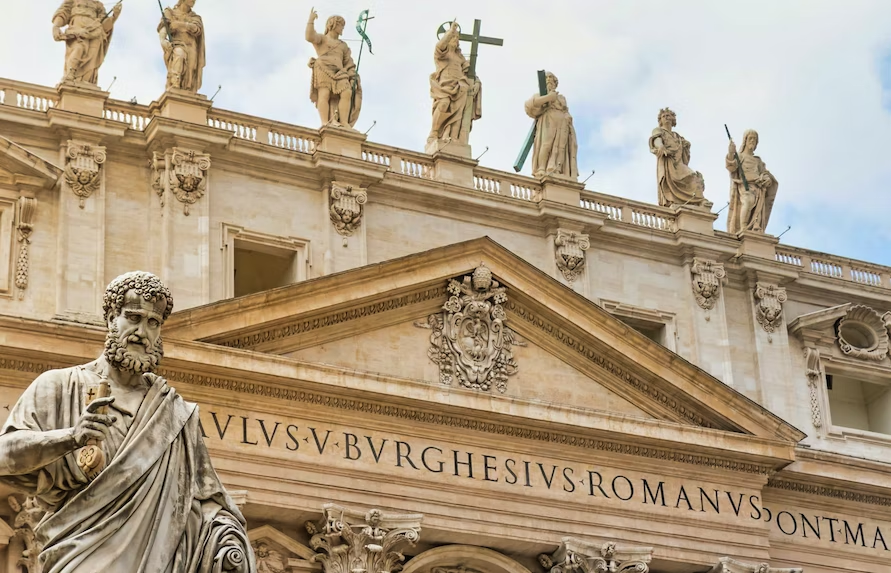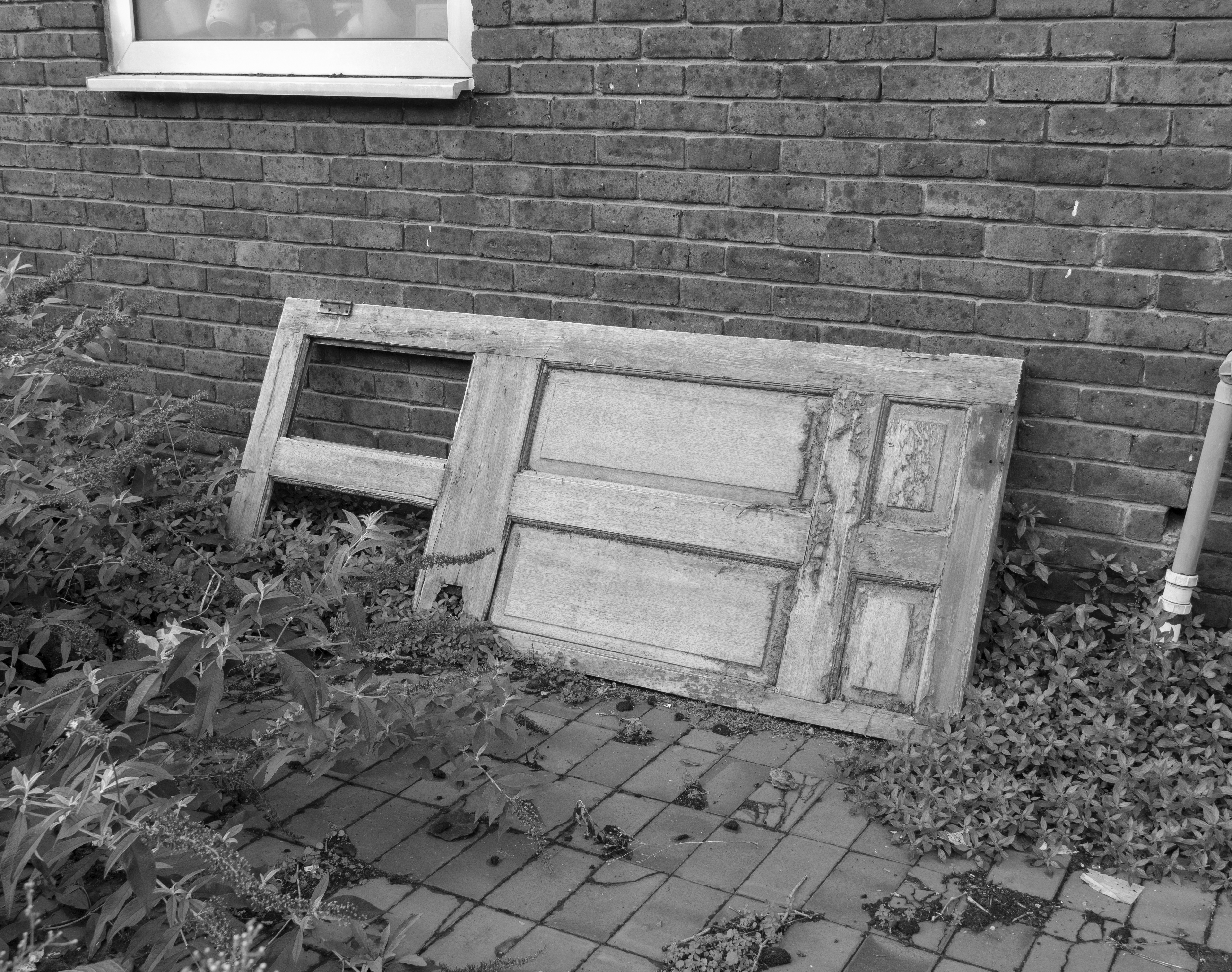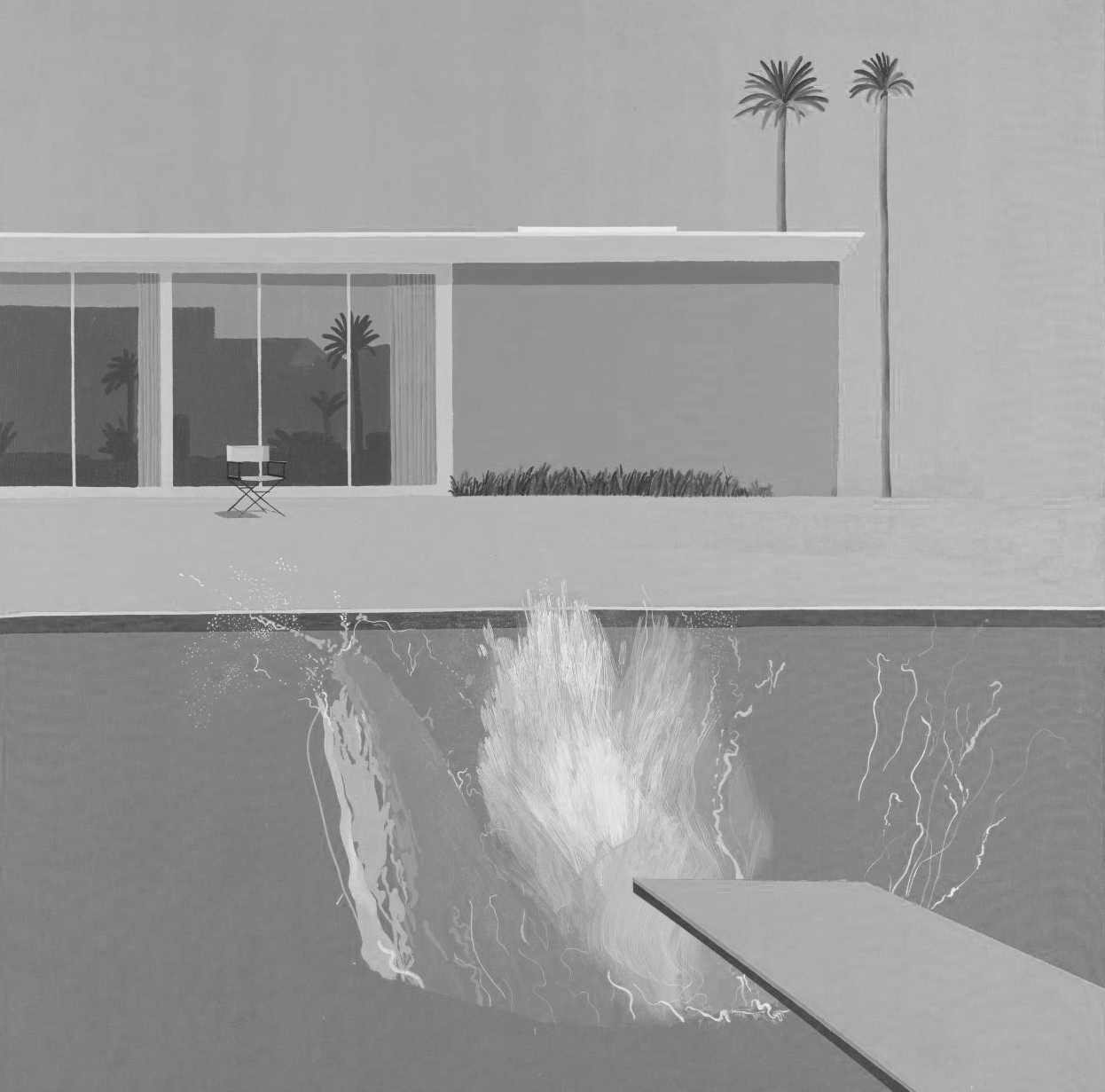Finding the Centre of the World
Project details
Type: Site-specific, research
Year: 2023
Medium: Performative film, installation,
photography, drawing
Type: Site-specific, research
Year: 2023
Medium: Performative film, installation,
photography, drawing
《寻找世界中心》在平凡的城市空间中发现了诗意。它试图识别、参与和改变伦敦斯特拉特福的一系列门槛,探寻这些门槛在历史、文化、政治上代表什么角色,并通过有趣的、意想不到的干预来改变它们。
现场干预采取了迭代实验的形式,通过一系列有针对性的装置来重塑运河边一个被忽视的空间,鼓励公众进入这个空间,并以意想不到的方式激发他们的想象力。黑色的门作为门口,引导观众登上墙壁,绕行空间;梯子作为空间监视的手段;跳水板邀请观众跳入这个富有想象力的空间。 这种实践促使我们改变看待城市平凡事物的方式。
Finding the Centre of the World finds poetry in mundane urban spaces. It seeks to identify, engage and transform a series of thresholds in Stratford, London, asking what role such thresholds have represented historically, culturally, politically and transformed them through playful, unexpected interventions.
The live intervention took the form of iterative experiments remaking a neglected space by the canal through a series of targeted installations that encouraged the public to enter the space and provoke their imagination in unexpected ways. A black gate acts as a doorway to guide the audience up onto a wall to circumnavigate the space; a ladder acts as a means of surveillance of the space; a diving board invites the audience to leap into this imaginative space. This body of practice urges us to shift our way of looking at the mundane in the city.
现场干预采取了迭代实验的形式,通过一系列有针对性的装置来重塑运河边一个被忽视的空间,鼓励公众进入这个空间,并以意想不到的方式激发他们的想象力。黑色的门作为门口,引导观众登上墙壁,绕行空间;梯子作为空间监视的手段;跳水板邀请观众跳入这个富有想象力的空间。 这种实践促使我们改变看待城市平凡事物的方式。
Finding the Centre of the World finds poetry in mundane urban spaces. It seeks to identify, engage and transform a series of thresholds in Stratford, London, asking what role such thresholds have represented historically, culturally, politically and transformed them through playful, unexpected interventions.
The live intervention took the form of iterative experiments remaking a neglected space by the canal through a series of targeted installations that encouraged the public to enter the space and provoke their imagination in unexpected ways. A black gate acts as a doorway to guide the audience up onto a wall to circumnavigate the space; a ladder acts as a means of surveillance of the space; a diving board invites the audience to leap into this imaginative space. This body of practice urges us to shift our way of looking at the mundane in the city.
一部基于伦敦斯特拉特福德运河旁一个平凡而被忽视的圆形露台的表演性电影。该影片旨在探索如何将平凡之物提升为显著的,并启发公众重新关注生活的诗意本质。讨论的重点在于门槛,通过在地的装置安装来探索进入的可能性。影片通过物质想象力探索揭示场地、其背景及其定位的意义时刻的潜力,以帮助我们转换我们看待平凡环境的方式。
影片的旁白使用故事讲述的方式,部分文本摘录自日本禅宗和道教。通过现场表演和与公众的互动,该影片再现了另一种真实。通过将文本和现实并置来探索门槛中包含的二分法内涵。
叙述用于对抗图像,机会用于挑战秩序。影片从无人之地开始,找到了世界的中心。
"Finding the Centre of the World" is a performative film based on a mundane and neglected circular terrace that sits by the canal in Stratford, London. The film aims to explore how the ordinary can be elevated to become significant and inspire the public to refocus on the poetic nature of life. The discussion is centered on the threshold, with on-site installations placed to explore the possibility of entry. The film explores the potential of material imagination to reveal moments of meaning through the site, its context, and its orientation to help us better understand the environment we live in.
The voice-over uses storytelling and extracts text from Japanese Zen and Taoism. Through on-site performance and interaction with the public, the film treats representation as an absolute reality in its own right. The connotation of dichotomy contained in the threshold is explored through juxtaposition.
The narrative is used to confront the picture and the opportunity is taken to confront the order. The film starts from no man's land and finds the center of the world.
···

在这个世界中,门意味着允许进出的可移动屏障。一扇门代表一个入口,入口本身可以理解为一个门槛空间。门槛空间是一种中介空间,从室外过渡到室内,它是建筑的重要组成部分,因为它为建筑的使用者提供了一个重要的第一印象。门槛也包含了建筑神话的本质,画家兼神话学家布莱恩·弗劳德说:“精灵们居住在像花园底部这样的过渡空间:存在于种植和荒野之间的边界。” 为平凡的空间创造一个入口,以转变我们进入和看待这个空间的方式,从而平凡之物能够变得显著。
In this world, a door signifies a movable barrier that allows entry and exit. A door represents an entrance, which can be understood as a threshold space. The threshold space is an intermediary space that transitions from the exterior to the interior, and it is an important component of architecture because it provides inhabitants with an important first impression. The threshold also encompasses the essence of architectural myth. Brian Froud, a painter and mythologist, said, "Fairies live in transitional spaces like the bottom of gardens: the borders between cultivation and wilderness." Creating an entrance for an ordinary space can transform the way we enter and perceive the space, making the mundane significant.


这是一个坐落于运河边的不受关注和打理的环形景观台地,低矮的石台阶围合出了圆形的空间,围绕着圆环同时产生了建筑的两个领域——内部的世界和外部的世界(神圣的和世俗的,私密的和公共的,安全的和危险的)。圆环设定了边界,边界两侧的空间、状态和内容被明确的表示了出来。正如数学家g·斯宾塞·布朗(G. Spencer Brown)雄辩地指出的那样,通过制造圆环,人类同时给了我们“区分的观念和指示的观念……我们不加以区分,就不能作出指示。”
This is a neglected and unmanaged circular platform situated by the canal. The low stone steps enclose a circular space that generates two realms of architecture - the inner world and the outer world (sacred and secular, private and public, safe and dangerous) around the circle. The circle sets the boundary, and the space, state, and content on both sides of the boundary are clearly expressed. Through the making of- ring, man simultaneously gives us, as so eloquently put by the mathematician G. Spencer Brown, "the idea of distinction and the idea of indication ... we can not make an indication without drawing distinction."


在环形的石阶中留出空间是建筑的第一步,这是第一个纯粹的建筑形式,来源于需求而不是实用。于是在台阶结束的地方就是这个空间的入口。 创造门槛就是创造纯粹的建筑空间。虽然它是功能性的,但它的命令式不是功能性的。它既是有形的,又是象征性的。它是概念性的,但可以体验到。它既容易理解,又难以捉摸。它是建造,也不仅仅是建造。它的联系是原始的——火和壁炉,石头和土地,边界和通道。它标志着从内心世界到外部世界的运动。这是建筑的第一幕。
Leaving space within the circular stone steps is the first step in architecture. It is the first pure architectural form that comes from demand rather than practicality. Thus, the entrance to this space is at the end of the steps. Creating a threshold is creating pure architectural space. Although it is functional, its imperative is not functional. It is both tangible and symbolic. It is conceptual but can be experienced. It is easy to understand, but hard to grasp. It is building and more than building. Its connection is primitive - fire and fireplace, stone and land, boundary and passage. It marks the movement from the inner world to the outer world. It is the first act of architecture.
一条线----门槛作为一种状态
A Line ---- The threshold as a condition
A Line ---- The threshold as a condition

"If you trip up on the way in, you bring danger;
If you trip up on the way out, be aware of danger ."


当古代人们谈到“门槛”时,通常是指门下的横木和门前的挡板,其主要目的是保护室内免受自然灾害和野生动物的侵害。 门槛代表着愿望和祝福,它是安全与危险的分界线。在古代神话中,门槛之外的是鬼魂和幽灵,高高的门槛能够保护家人的健康和平安。门槛向栖居着传递了一个信息:如果你在进来的路上绊倒了,你就带来了危险;如果你在出去的路上绊到了,请注意外部的危险。
门槛还代表了减速和缓冲的作用。当人们进入室内时,需要跨越门槛,这使得他们在进入室内之前有机会停下来,安静地思考一下。在古代,高门槛的设计可以迫使访客提起衣服,以便主人可以检查是否携带了危险的物品。。
门槛是边界的象征,它清楚地界定了公共区域和私人区域。这条线分隔了两个不同的世界,外面和里面,寒冷和温暖,危险和安全,意想不到的和已知的。
In ancient times, when people talked about "thresholds", they usually referred to the horizontal wooden beam beneath the door and the board in front of it, which served to protect the interior from natural disasters and wild animals. The threshold represents wishes and blessings, and it is the boundary between safety and danger. In ancient myths, ghosts and spirits were believed to reside outside the threshold, and a high threshold could protect the health and safety of the family. At the same time, the threshold is a warning: if you trip up on your way in, you bring danger; if you trip up on your way out, be aware of dangers.
The threshold also represents a deceleration and cushioning effect. When people enter a room, they need to cross the threshold, which gives them a chance to stop and quietly contemplate before entering. In ancient times, the design of a high threshold could force visitors to lift their clothes, so that the host could check for any dangerous objects.
The threshold is a symbol of boundaries, clearly demarcating public and private areas. This line separates two different worlds, the outside and the inside, the cold and the warm, the dangerous and the safe, the unexpected and the known.


一个空间----门槛作为一个地方
A Space ---- The threshold as a place
A Space ---- The threshold as a place

“Before you go up the steps, the church is a church and the garden is a garden;
After you go up the steps, the church is the church and the garden is the garden.
There is actually no difference between before and after,
except that your feet are a little higher than the ground after that.”






门槛作为建筑的序言,扮演着组织内部和外部空间过渡的角色,通过一系列指示和提示扩展了空间,以增强参与者的感知。学者Till Boettger总结了进入建筑空间的七个步骤,包括识别、接近、到达、定向或获取信息、监控和离开。这些步骤的顺序很重要,需要穿过一系列空间才能进入内部,因此门槛的作用被延伸到了一系列空间之中。
雕塑的发展可以帮助我们理解门槛作为一个空间。最早期的雕塑被建造在壁龛内,是建筑的一部分,到布拉曼特(Bramente)将雕塑设置在屋顶上,再到雕塑从建筑中解放出来屹立在基座之上,而后罗丹将雕塑放置在地面上,最后卡尔安德烈只保留了基座。我们不需要雕塑,我们只需要基座,站在基座上时,我们便成了雕塑。
The threshold, as the preamble to a building, plays a crucial role in organizing the transition between the interior and exterior spaces, while expanding the spatial realm through a series of indicators and cues that enhance participants' perceptions. Till Boettger has summarized seven steps involved in entering a building space, including recognition, approach, reaching, arrival, orientation or information, monitoring, and exit. The sequence is essential, as one must pass through a series of spaces to reach the interior, thus extending the function of the threshold to a series of spaces.
The development of sculpture can help us understand the threshold as a space. The earliest sculptures were built in niches, as part of the architecture. Bramante placed sculptures on the roof, and then they were liberated from the building to stand on a pedestal. Finally, Rodin placed sculptures on the ground, and Karl Andre only kept the pedestal. We don't need the sculpture; we only need the pedestal. When we stand on the pedestal, we become the sculpture.





曾经有一个故事,地面中央放置着一个托盘。一位男子认为这是他的领地,于是站在托盘上,后来托盘被移动到不同的地方。无论托盘出现在哪里,他都会站在上面为其而战,占据空间。有一天,他把托盘放在了自己的门口。从此,托盘成为了一个重要的地方,成为了门槛。
尽管托盘并不是门,但在某种程度上它也是门,因为它具有象征性的隐喻作用。
There is a story of a pallet placed in the middle of the ground. A man claimed it as his territory and stood on it. Later, the pallet was moved around and appeared in different places, but he always fought for it and occupied the space. One day, he placed the pallet at his doorway. At this moment, the pallet became an important place. It became the threshold.
Being not a door but in a way it is a door. It is a metaphor.




托盘代表了一片空间,暗示了边界。在我们进入某个空间之前,我们应该在这个门槛空间停下来,坐下来思考我们是谁以及在哪。当我们做好准备时候,我们便可以进入这个空间。
A threshold space is represented by a pallet, implying boundaries. Before entering a particular space, we should stop in this threshold space, sit down, and contemplate who we are and where we are. Once we are ready, we can proceed into the space.
一种记忆----门槛作为一种期望
A memory ---- The Threshold as anticipantion

"If one were to give an account of all the doors one would like to re-open,
one would have to tell the story of one's entire life (Bachelard, 2014)."
当告诉一个栖居者避免进入某个房间时,往往会产生相反的效果,并灌输一种调查的欲望。被门关上的世界被笼罩在神秘之中,禁止进入的行为本身就成为了一种诱惑。如果门是部分打开的,它就产生了一种强烈的邀请。我们对与事物的感知存在于我们认知的边界,是一种深刻而模糊的记忆。我们与那些唤起过去经历的物件和空间建立联系。门槛可以被视为对探索的邀请。即使发出诱人的邀请,但一个障碍,如坚实的屏障,阻碍了身体的进入,一个人只能穿越他们想象中的门槛。最重要的门槛是那些可以在想象中跨越的门槛。
门槛包含了记忆和幻想。在《记忆的艺术》一书中,作者描述了一种古老的修辞研究方法,将内部空间的顺序转换为记忆,以便后代记住一系列的想法并讨论它们(弗朗西斯·阿梅利亚·耶茨,1996年)。不同的门有不同的记忆。一个门或三个门之间的区别是很大的。窗户上的门和破碎的门讲述了不同的故事。
When telling a resident to avoid entering a certain room, it often has the opposite effect and instills a desire to investigate. The world behind a closed door is shrouded in mystery, and the act of being forbidden entry itself becomes tempting. If the door is partially open, it creates a strong invitation. Our perception of things exists at the boundary of our cognition and is a profound and fuzzy memory. We establish connections with objects and spaces that evoke past experiences. A threshold can be viewed as an invitation to explore. Even when an enticing invitation is given, a barrier such as a solid obstacle prevents physical entry, and one can only cross the threshold in their imagination. The most important thresholds are those that can be crossed in the mind's eye.
The threshold is a space that encompasses memory and imagination. In her book, "The Art of Memory," Frances Amelia Yates describes an ancient rhetorical research method that transforms the sequence of internal space into a memory palace. This technique allows future generations to remember a series of ideas and engage in thoughtful discussion (1996). The memories associated with different doorways vary greatly. The number of doorways, whether one or three, can also make a significant difference. A doorway on a window or a broken and damaged doorway can tell disparate stories, each with its own unique meaning.



把门想象成一座桥或一个码头,它们都是世界之间的连接者。一座桥连接着河的两岸。这是一种强大的感觉。如果我们正试图过河,然后我们看到一座桥,这是一个很大的邀请。码头是两个独立域汇聚的门槛。码头是海与陆、静与动的交汇处。防波堤轻松有力地伸入河中。当船靠在码头上时,码头在某些方面类似于一座桥。船是一种把人带到另一个星球的交通工具。
拆掉屏障,建立一个幻想。桥梁和码头是聚集的地方。它们是连接和转换的结构。景观是通过码头带到河边的。河流、河岸和土地被带入彼此的社区。建造码头会导致创意空间的重大转变。门槛上满是回忆。它是关于期待和邀请,关于邀请你跨越到水里去。
Imagine a door as a bridge or a jetty, both serving as connectors between worlds. A bridge spans across the banks of a river, and it evokes a powerful sense. If we are attempting to cross the river and come across a bridge, it becomes a significant invitation. A jetty serves as a threshold where two separate domains converge. It is a meeting point of the sea and the land, of stillness and movement. The jetty extends gracefully into the river, serving as a point of connection similar to a bridge when a boat docks onto it. A boat is a means of transportation that carries people to another realm.
By dismantling barriers, we establish a realm of imagination. Bridges and jetties are gathering places. They are structures that facilitate connection and transformation. The landscape is brought to the riverbank through the jetty. The river, its banks, and the land are integrated into each other's communities. The construction of a jetty leads to a significant shift in creative space. The threshold is filled with memories. It is about anticipation and invitation, inviting you to cross over into the water.
门槛作为一个决定
The threshold as a decision

"We never arrived from outer space. And what we pass through becomes part of us."
叙事步行可能很短,从人行道上走两到三步就进入建筑主体。它可以很长,包括大量的楼梯和门廊。我们带着在路上收集的所有东西和唤醒的记忆来到了这里。 我们体验了精心布置和设计的空间。我们已经做了充分的停留和准备,最终要决定是否进入这个地方。
你决定要要跳进这个幻想的水池了吗?
Narrative walking can be brief, requiring just a few steps from the sidewalk to enter the main body of a building, or it can be an extended journey involving multiple flights of stairs and porticos. As we undertake this journey, we bring with us all of the things we have collected and memories we have awakened along the way. We experience the carefully arranged and designed space, taking our time to fully appreciate it and prepare ourselves for the decision of whether or not to enter.
Have you decided to jump into this imaginary pool?





Finding the Centre of the World | 2023